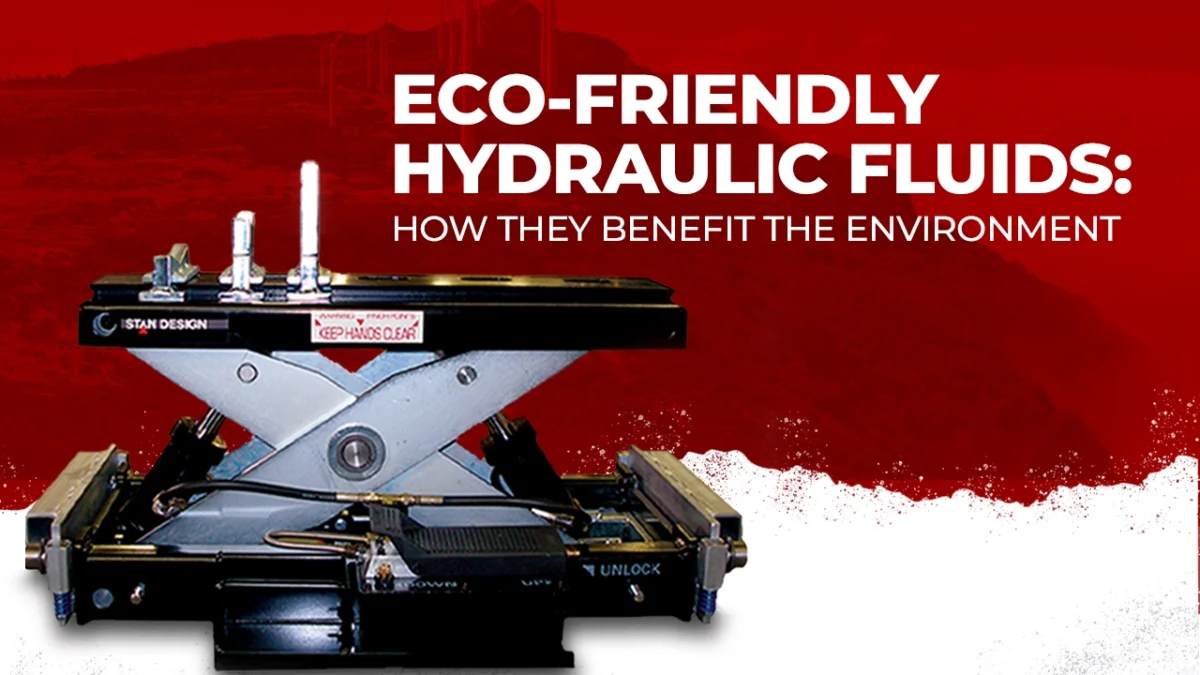Eco-friendly hydraulic jacks are automotive lifting equipment that use fluid power to lift and lower vehicles for maintenance and do so without harming the environment.
Whether through their mechanism of operation or the materials required to construct them, environment friendly jacks do not deplete the planet’s resources or pollute them in the process.
This is in stark contrast to earlier, traditional variants, which have been increasingly wiped out through a variety of regulatory policies, specifications and labelling schemes by government and international standardization agencies.
Before we go into how vehicle maintenance technology has advanced over the years and how hydraulic fluid- a chief component of that development- has benefited the environment, we will take a quick look at what hydraulics are.
What are Hydraulic Jacks?
A hydraulic jack consists of:
- Reservoir or buffer tank
- Pump with piston or plunger
- Pump lever or handle
- Check valve
- Main cylinder or ram
- Release valve
- Handle
The piston is responsible for lifting the heavy load or weight. It is usually mechanically activated by shifting the positions of the handle or pump lever attached to it. This movement builds up pressure in the hydraulic fluid contained inside the reservoir or buffer tank.
The pressure created allows the fluid to move through a check valve into the ram or main cylinder, which then pops out of the main body of the hydraulic jack creating the force required to lift the load. Finally, the release valve relieves the built pressure for easy retraction and lowering of the ram with the load on it.
Vehicle Maintenance Technology- Regulatory Schemes Through the Years
These measures and initiatives aim to minimize waste and reduce environmental impact throughout the entire hydraulic fluid product life cycle. Some of these are discussed below-
- EU Ecolabel– The EU Ecolabel is part of a broader EU Action Plan on Sustainable Consumption and Production and Sustainable Industrial Policy adopted by the European Commission that links the EU Ecolabel to other EU policies. EU Ecolabel meets the ISO 14020 Type I requirements for ecolabels.
- Blue Angel Eco-label– The Blue Angel is an environmental label in Germany that has been awarded to particularly environmentally friendly products and services since 1978 by the Federal Ministry for the Environment, Nature Conservation, Building and Nuclear Safety. It highlights more environmentally friendly and healthy developments and alternatives in areas where standard products have a negative impact on the environment.
- Swedish Standard SS 15 54 34 Category V– The Swedish Institute for Standards (SIS) developed the Swedish Standard SS 15 54 34. It includes environmental requirements for hydraulic oils that contribute to their classification as non-hazardous to health and the environment. It stipulates the need for high biodegradability, low acute and chronic toxicity of the additives toward water organisms.
- Vessel Incidental Discharge Act– Issued by the Environmental Protection Agency (EPA) in the United States of America, the VIDA establishes a framework for the regulation of discharges incidental to the normal operation of a vessel under a new Clean Water Act (CWA) Section 312.
- USDA BioPreferred® Product Label– The USDA Biopreferred program has two major initiatives- Federal Procurement Preference and Product Labeling. It promotes the increased purchase and use of biobased products to reduce petroleum consumption, increase the use of renewable resources, better manage the carbon cycle, and reduce adverse environmental and health impacts, while promoting economic development, creating new jobs and providing new markets for farm commodities.
Eco-Friendly Hydraulic Jack Fluids
There are four basic types of eco-friendly hydraulic jack fluids-
- HETG Fluids (Hydraulic Environmental Triglyceride)– The category of Biodegradable Hydraulic Oils is governed by the internationally accepted standard ISO 15380 (2016) and technical rule VDMA 24568 (1994). ISO 15380 standard specifies the requirements for biodegradable hydraulic oils in 4 main material product groups: HETG, HEPG, HEES and HEPR. The minimum content of base fluid for each product group shall not be less than 70 % (m/m). HETGs are technically limited by lower resistance to oxidation and temperature stability, as result of their “double bond”. HETG oils feature very high levels of biodegradability and are used in older, less demanding, hydraulic systems. For technically highly demanding hydraulic applications HETG’s are not fully suitable.
- HEES Fluids (Hydraulic Environmental Ester Synthetic)– Due to technical and environmental capability HEES products currently lead in the category of biodegradable hydraulic fluids. Group HEES further splits into 2 sub-categories with different levels of performance properties: a) Unsaturated (or partially saturated) synthetic esters are products based on vegetable resources or their mixtures. Their technical applicability in high demanding applications individually depends on the composition of the mixture. b) Saturated synthetic esters currently provide the most sophisticated, environmentally acceptable solution for hydraulic systems. Technical advantages of saturated synthetic esters are performance benefits, extreme stability, wide temperature range, compatibility, high levels of biodegradation and renewable resources.
- HEPG Fluids (Hydraulic Environmental Poly Glycol)– Performance-wise HEPG’s are highly sophisticated products. However, their severely limiting factors are incompatibility with paint, sealing materials, hoses, and virtually any other type of hydraulic oil. HEPG’s are also questioned for poor biodegradation and not meeting criteria for renewable resources, e.g. unable to obtain Ecolabels. HEPG oils are used only on a small scale. Despite these factors they have some heavy-duty advantages like good resistance to ageing, good lubrication properties, and leakages are easily washed away and invisible in water. This is why their application lies in the fields of water, such as locks, weirs, dredgers etc., concrete mixing systems, pharmaceuticals and foodstuffs industries. It is not recommended in construction machinery, and its overall use is in decline, with the trend towards HEES-type media.
- HEPR Fluids (Hydraulic Environmental Polyalphaolefin and Related)– HEPR oils are technically well-developed products. However, their environmental acceptance is often compromised (similar to HEPG). HEPRs are produced in very low viscosities, limiting their primary applicability. Viscosity modifiers are required to improve their usability in common hydraulic applications.


